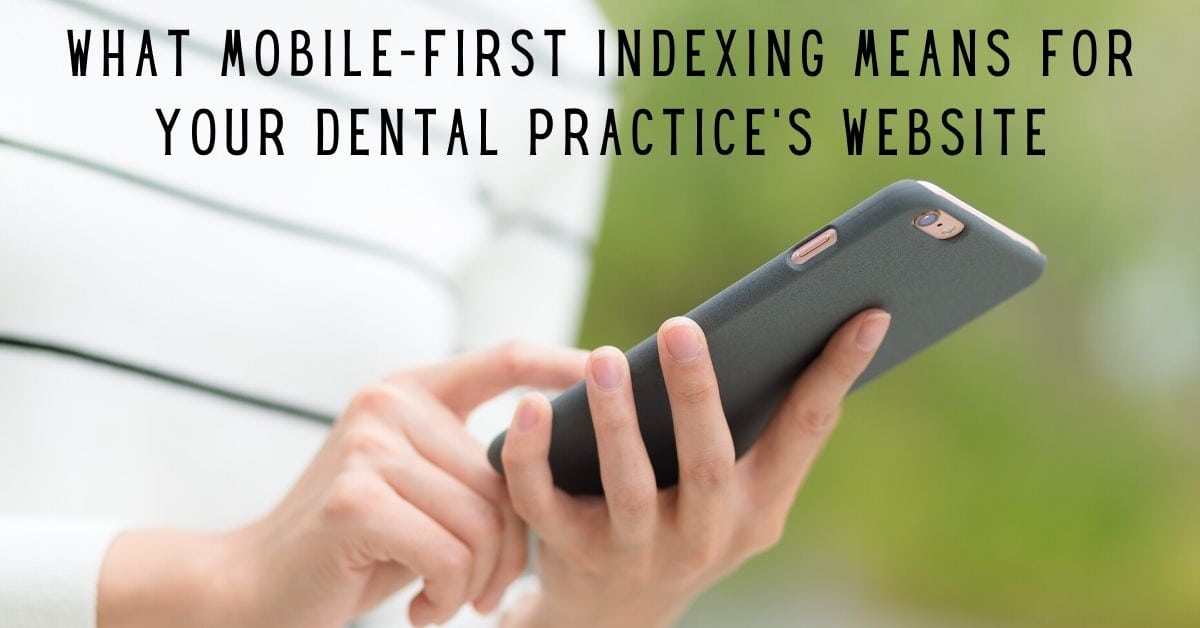If you’re like many of us, then you rely heavily on your smartphone. You’re likely relying on it to respond to emails, keep track of the news, and communicate on social media with friends. At the end of 2016, mobile internet usage exceeded desktop usage for the first time. That gulf has only grown in the years since.
Google is aware of this trend, and they have been making changes to its algorithm over the past decade to account for it. Mobile-first indexing is their most recent effort to do so.
What is mobile-first indexing?
Mobile-first indexing means that when someone makes a Google search, the mobile version of your website is scanned by Google before your desktop version to determine the ranking in the search engine results page. So your mobile site performance will help dictate your search engine ranking performance.
Why does it matter in 2020?
Google has been working on making mobile-first indexation of its search engine the default for a while now. All new websites are already being indexed using mobile-first indexing since July of last year.
By December 2019, it used mobile-first indexing in its search results for more than half of the web pages on the internet. The number is 70 percent today.
Just last month, Google announced that mobile-first indexing would become the default behavior for all sites by September of this year.
That means mobile sites will be the default by which your website is ranked. Google hasn’t fully discounted desktop sites yet, but their search engine used to be ‘desktop-first,’ and it will be ‘mobile-first’ from September.
What can I do to ensure my website can take advantage of mobile-first indexing?
Here’s what you can do to make sure your dental website is fully optimized for mobile-first indexing:
1. Have a functioning mobile version of your site
A properly running website that is easy to navigate will ensure your dental practice shows a professional face to potential customers.
Having a clean and uncluttered navigation design is critical so that your website is easy to use and pleasing to look at. Pages should be clearly labeled with the type of information they contain so that visitors can see what they need quickly.
2. Ensure ‘mobile parity.’
When a mobile site has all the same content and features of a desktop site, we talk of mobile parity. Is your mobile website identical to your desktop website, or are there any differences?
Google recommends ensuring that:
- the content displayed on both sites is similar (including text, images, videos, links).
- Metadata (titles and descriptions, meta tags for robots), and all structured data are the same.
They also recommend that you perform content and metadata checks if the website has recently been launched or updated, to ensure mobile parity.
Make sure that your mobile website covers all of the bases that cover your desktop site, with the same look and feel of quality. Ask yourself: Will, your potential customer, still be happy with the impression of your dental practice if you only had a mobile website?
3. Check your site speed
Site speed is the average of multiple sample pages on a site. It’s a bit different from page speed, known as the length of time it takes to view all the content on a particular page, or the time it takes for a browser to obtain the first byte of a web server.
How does it make you feel when you arrive at a website that takes a long time to load? This is probably likely to make you feel frustrated, and you might give up and head to another site after a certain length of time.
A study by the SEO website Backlinko found that a standard web page takes 87.84% longer to load on mobile websites compared to desktop. If your dental website is committed to serving the same experience on both platforms, you need to take steps to close this gap.
Ensure priority is given to mobile page speed and load time, and that images and other (potentially) dynamic elements are optimized for the mobile experience.
Making your dental website align with the times requires regular tweaks to your website. If you’re looking for help in staying mobile-first compliant, contact us today for help. Rest assured, we have the experience you need!

